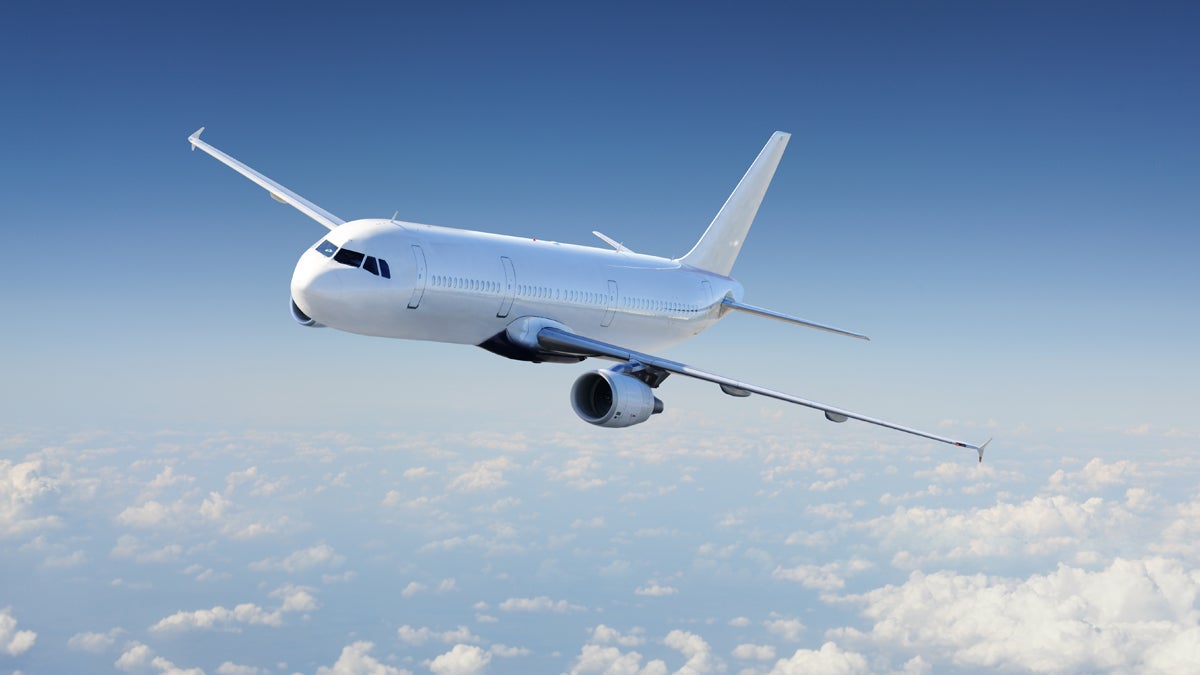There’s nothing green about flying…
Listen
Few human activities are as carbon-intensive as traveling by airplane. (Shutterstock image: xhttp://shutr.bz/17HoIxa)
…except maybe the “vacant” sign on the lavatory.
As the constant drumbeat about climate change and environmental degradation continues in the media, many Americans are beginning to pay attention and curb harmful behaviors. Maybe it’s driving less or buying a hybrid car, recycling, or little things like socking plastic bags away under the kitchen counter.
But one thing most people don’t think about it how air travel affects their carbon footprint. Let’s say that it would take a whole lot of reused plastic bags to make up for even a single plane ride.
“Flying releases emissions, CO2 of course is the one most people are aware of,” said Christie Aschwanden, lead science writer for fivethirtyeight.com and author of a recent post about flying and climate change. “But it releases these emissions up in the atmosphere where it actually does more damage than it would if it was released on the ground.”
Although air travel only accounts for 2.5 percent of global carbon emissions, it’s impact is growing rapidly and it’s still a tremendous footprint for a single industry—combined, the world’s airlines produce as much carbon as the nation of France, every year.
For people in wealthy, developed countries, it’s often their largest contribution to carbon output.
“Just to give you a sense of scale, taking a flight from Denver to New York, round trip, releases just under 2,000 kilograms of Co2. For that amount of emissions, I could drive my little Honda car about 7,500 miles,” said Aschwanden.
In other words, one quick jaunt on a domestic air carrier releases about as much carbon as the average American driver would over the course of an entire year of car use. But Aschwanden reiterated that the impact of these emissions are multiplied by the fact that they are released directly into the upper atmosphere.
“It’s about 2.7 times worse to release this carbon up in the atmosphere than it is on the ground,” she said.
Now imagine putting 20,050 miles on that little Honda. But obviously, no matter how big the numbers get, people will be loath to sacrifice the freedoms allowed by mass air travel. Can anything be done to make airlines more efficient?
Aschwanden says that improving jet fuel with biomatter could help, but that air travel is simply a very fuel intensive endeavor. Commercial airliners are also very expensive and are built to last, so even if more fuel efficient models were introduced today, it could take as long as 30 years before planes in the air today are retired.
But the lowest hanging fruit may not be in an undiscovered fuel source or futuristic airplanes, but in logistical improvements.
“Making sure that planes aren’t flying around an airport waiting to land, things like that, that’s another place where efficiency could be gained,” said Aschwanden.
But even if all these changes were phased in, it’s still unlikely that reforms will hit the carbon goals being set internationally and by the aviation industry. The bad news is that flight costs will probably get even more expensive to pay for carbon offsets—airlines basically paying other industries to pollute less in order to make up for their own activities.
Although airline tickets can seem expensive, costs per mile have actually gone down over the past decades so there is, arguably, room for environmental fees. These costs could also incentivize airlines to reduce their environmental impacts voluntarily and there’s evidence that some carriers simply haven’t been pulling their weight. The cleanest airline, Alaska Air, was found to operate flights 27 percent more efficiently than American Airlines, the least efficient.
But even those differences are relative.
“You’re talking about which Hummer is less environmentally destructive,” said Aschwanden.
WHYY is your source for fact-based, in-depth journalism and information. As a nonprofit organization, we rely on financial support from readers like you. Please give today.



